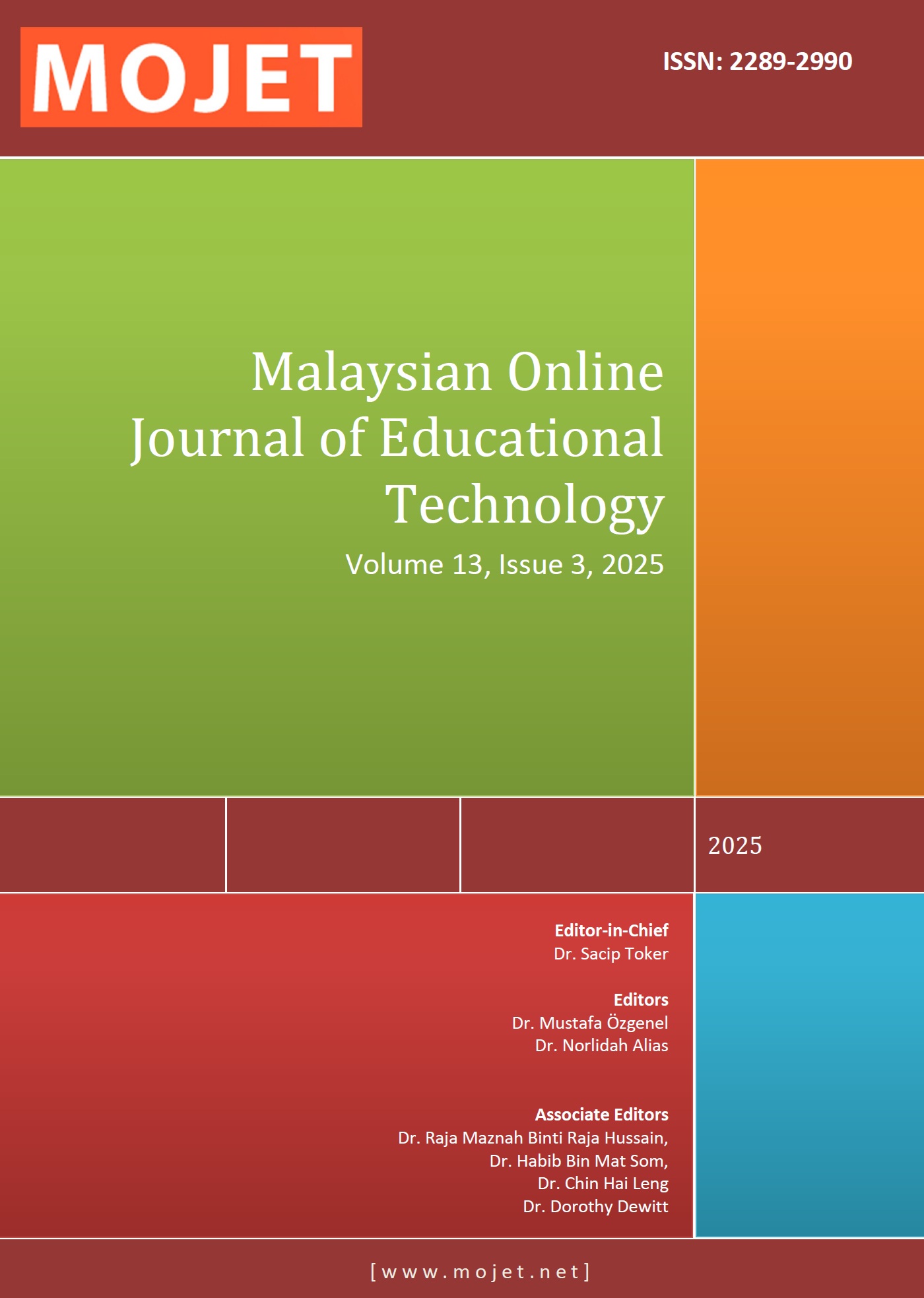Metaphorical Analysis of Primary School Students’ Perceptions of Artificial Intelligence
DOI:
https://doi.org/10.52380/mojet.2025.13.3.601Abstract
This study investigates the metaphors used by primary school students (aged 7–8) to describe Artificial Intelligence (AI), aiming to clarify their conceptual understanding of the subject. The metaphor analysis method was employed to explore how students conceptualize AI and to uncover the underlying cognitive structures influencing their perceptions. A phenomenological approach was adopted to understand students’ experiences and perceptions of AI. A total of 240 primary school students from Yozgat, Turkey, participated in the study during the 2024–2025 academic year. Students were asked to create a metaphor for AI and to visually represent it. The data were analyzed using content analysis. The findings revealed six key conceptual categories: education and knowledge, social and communicative roles, technological and mechanical structure, entertainment and ease of life, unusual/creative, and emotional/future-oriented metaphors. The most frequently occurring metaphors fell under the categories of education and knowledge and social and communicative roles, followed by technological and mechanical structure. The remaining categories were less commonly represented.These results suggest that primary school students primarily view AI as a tool for learning and social interaction, placing less emphasis on its technological or emotional dimensions.
Downloads
Published
How to Cite
Issue
Section
License
Copyright (c) 2025 Malaysian Online Journal of Educational Technology

This work is licensed under a Creative Commons Attribution-NonCommercial-NoDerivatives 4.0 International License.





